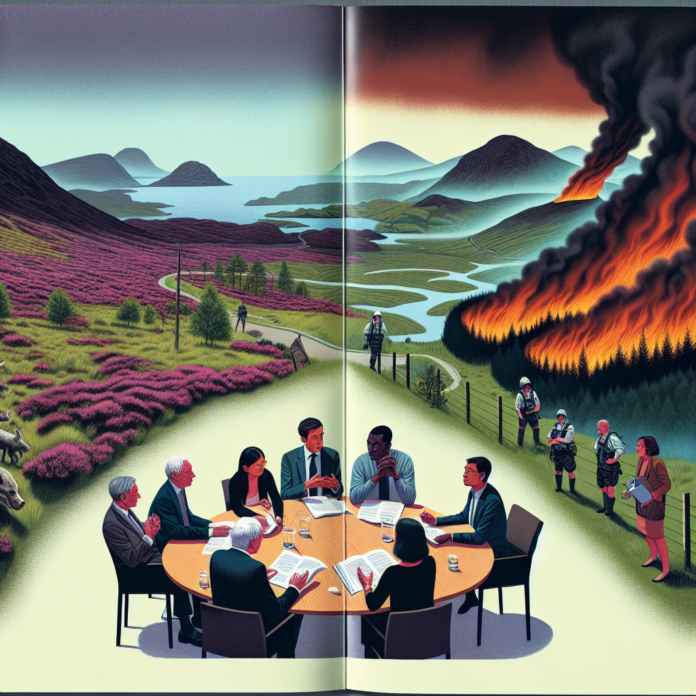Understanding the Rise of Wildfires in Scotland
‘The New Normal’: Experts Discuss the Surge in Wildfires in Scotland
Scotland has recently experienced a significant increase in wildfires, a phenomenon that has alarmed both residents and environmental experts. According to specialists, this trend is being attributed to a combination of climate change, land management practices, and changing weather patterns.
Climate Change as a Driving Force
One of the primary factors contributing to the rise in wildfires is climate change. The UK Met Office has reported that average temperatures in Scotland have risen over the past few decades, leading to hotter, drier summers. These conditions create an ideal environment for wildfires to ignite and spread. As the climate continues to change, Scotland may see an increase in both the frequency and intensity of wildfires.
Land Management Practices
Experts also point to land management practices as a significant factor in the increase of wildfires. In many areas, the practice of controlled burning, often used to manage heather moorlands, can inadvertently lead to larger, uncontrolled fires. Inadequate maintenance of these landscapes and the accumulation of dry vegetation further heightens the risk of wildfires erupting.
Weather Patterns and Their Impact
Shifts in weather patterns are another key element in the wildfire equation. Scotland has been experiencing fluctuations in rainfall, with periods of intense precipitation followed by prolonged dry spells. This inconsistency can create dry conditions conducive to wildfires, as well as lead to rapid vegetation growth that eventually dries out and becomes highly flammable.
Ecological Consequences
The ecological impact of these wildfires is profound. Wildfires can devastate local flora and fauna, disrupt habitats, and release significant amounts of carbon dioxide into the atmosphere, further exacerbating climate change. Additionally, the smoke from wildfires can affect air quality, posing health risks to the local population.
Preventative Measures and Community Involvement
In response to this alarming trend, local authorities and environmental organizations are taking steps to mitigate the risk of wildfires. This includes implementing better land management techniques, increasing public awareness about fire safety, and collaborating with community members to monitor and manage high-risk areas. Educational campaigns focus on informing the public about the importance of reporting fires early and the role of responsible outdoor activities in preventing wildfires.
Looking Ahead: Adapting to a Changing Climate
As Scotland adapts to its new reality, experts emphasize the importance of ongoing research and policy development to address the challenges posed by wildfires. Climate resilience strategies must be integrated into land management practices to ensure the protection of Scotland’s natural landscapes. Collaboration between government agencies, environmental organizations, and local communities will be crucial in developing effective solutions to this growing issue.
In conclusion, the rise of wildfires in Scotland is a complex issue driven by climate change, land management practices, and changing weather patterns. By understanding these factors and working together, Scotland can better prepare for and respond to the challenges posed by wildfires in the future.
